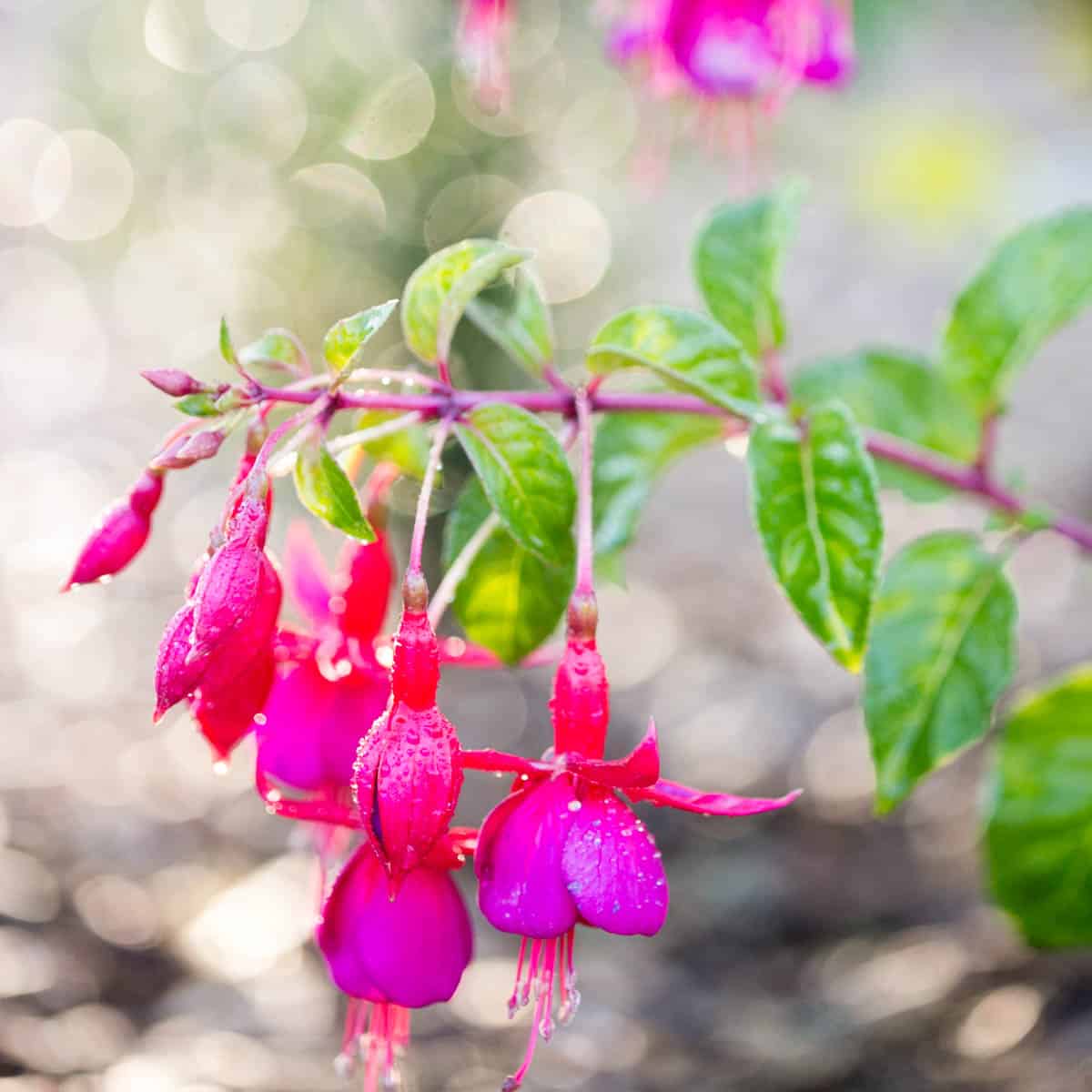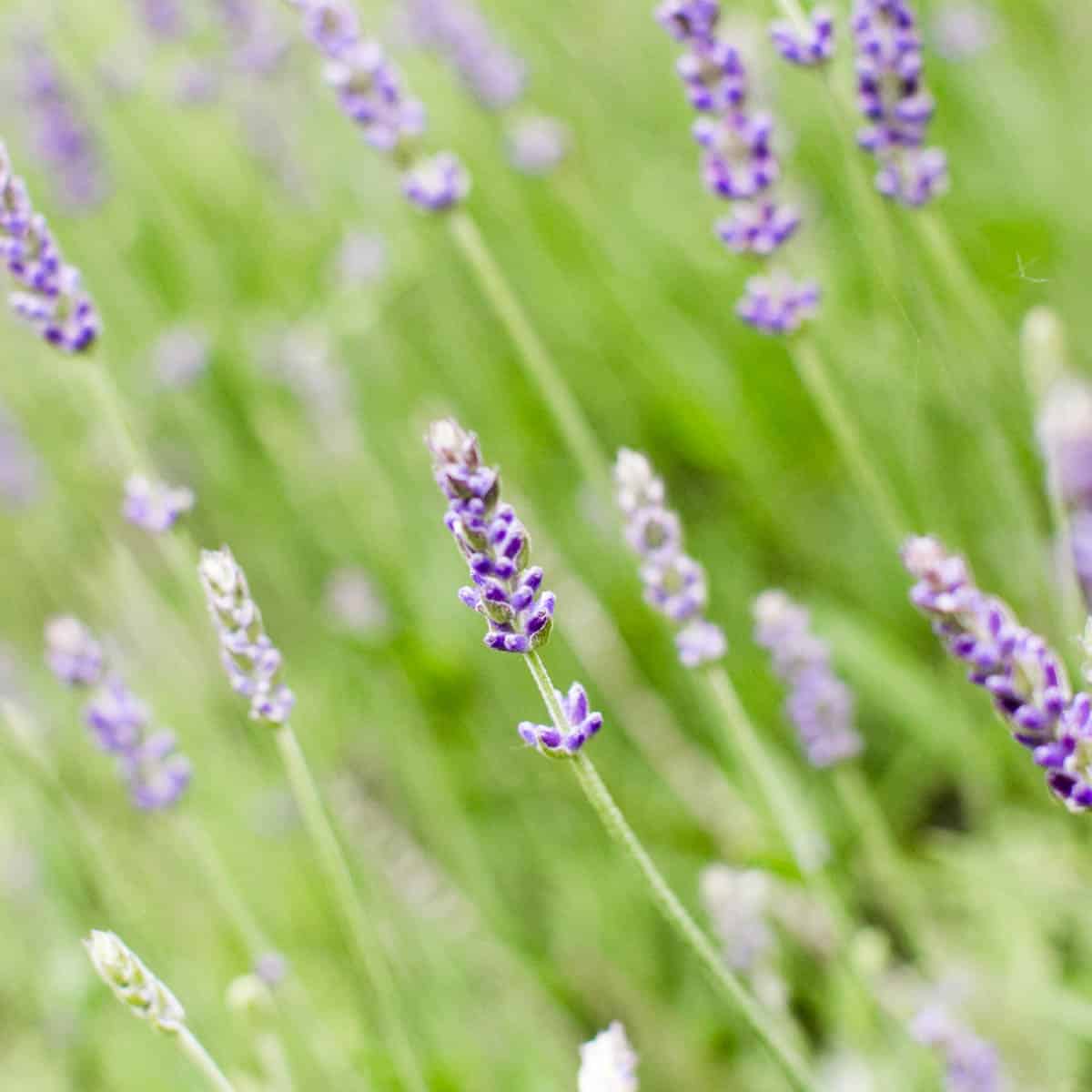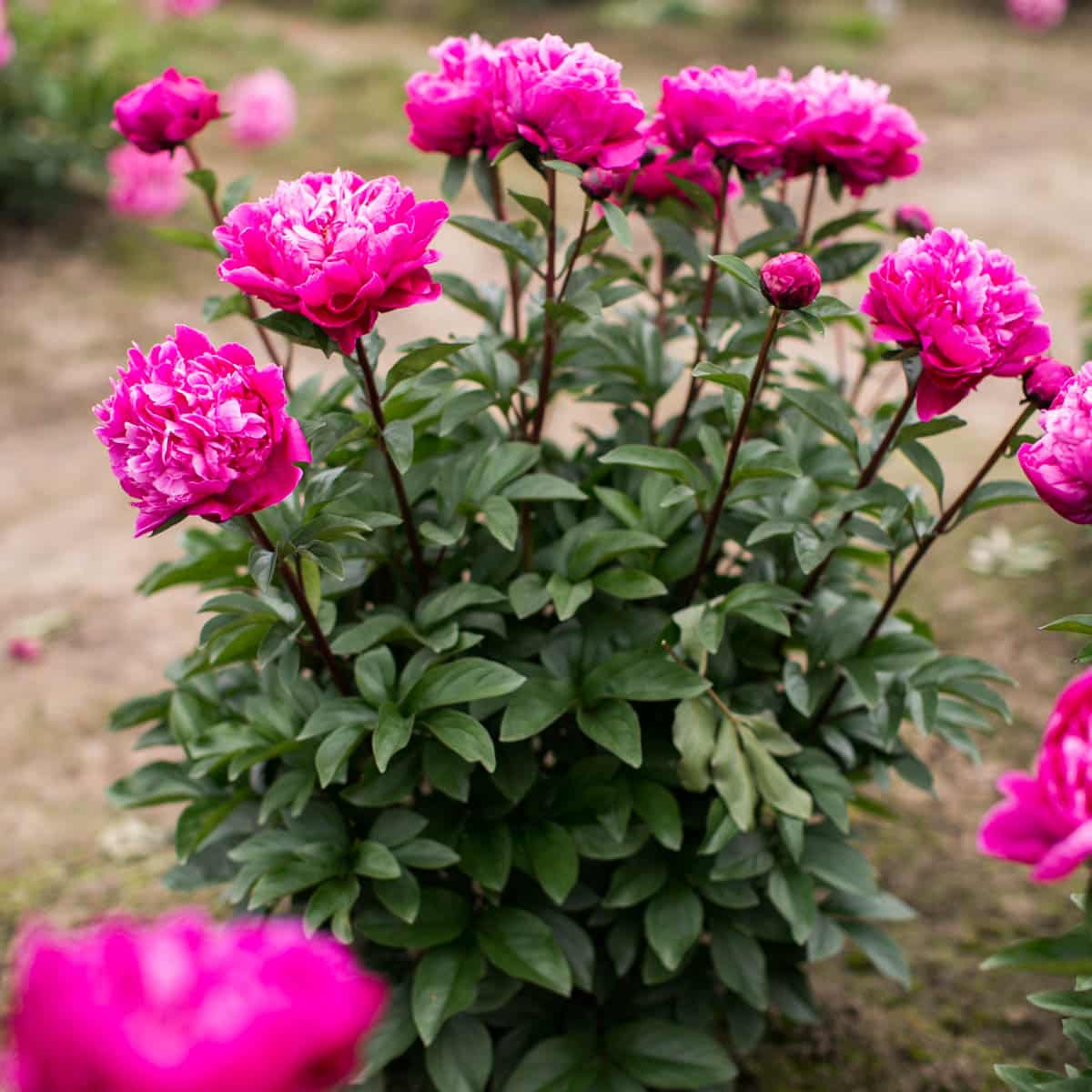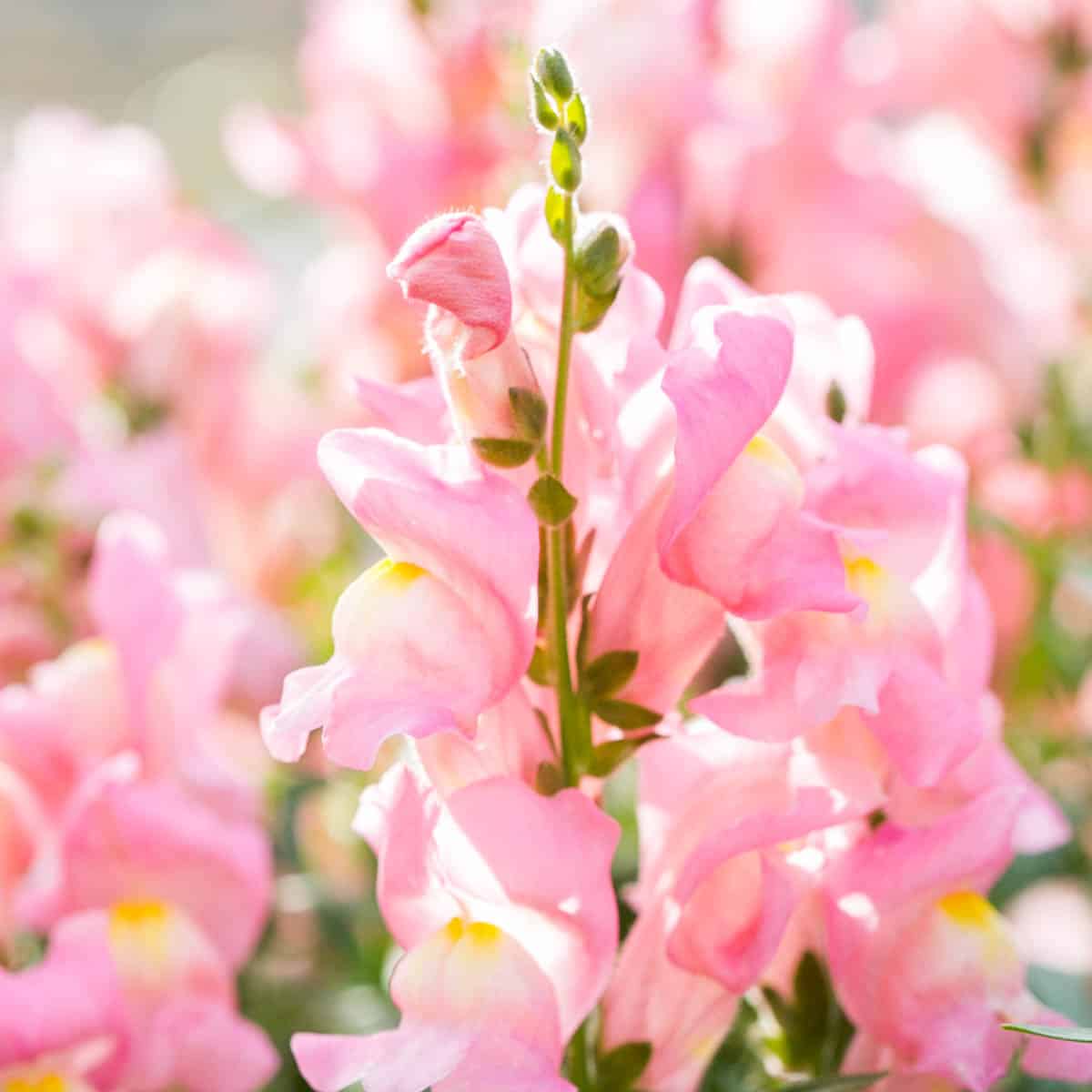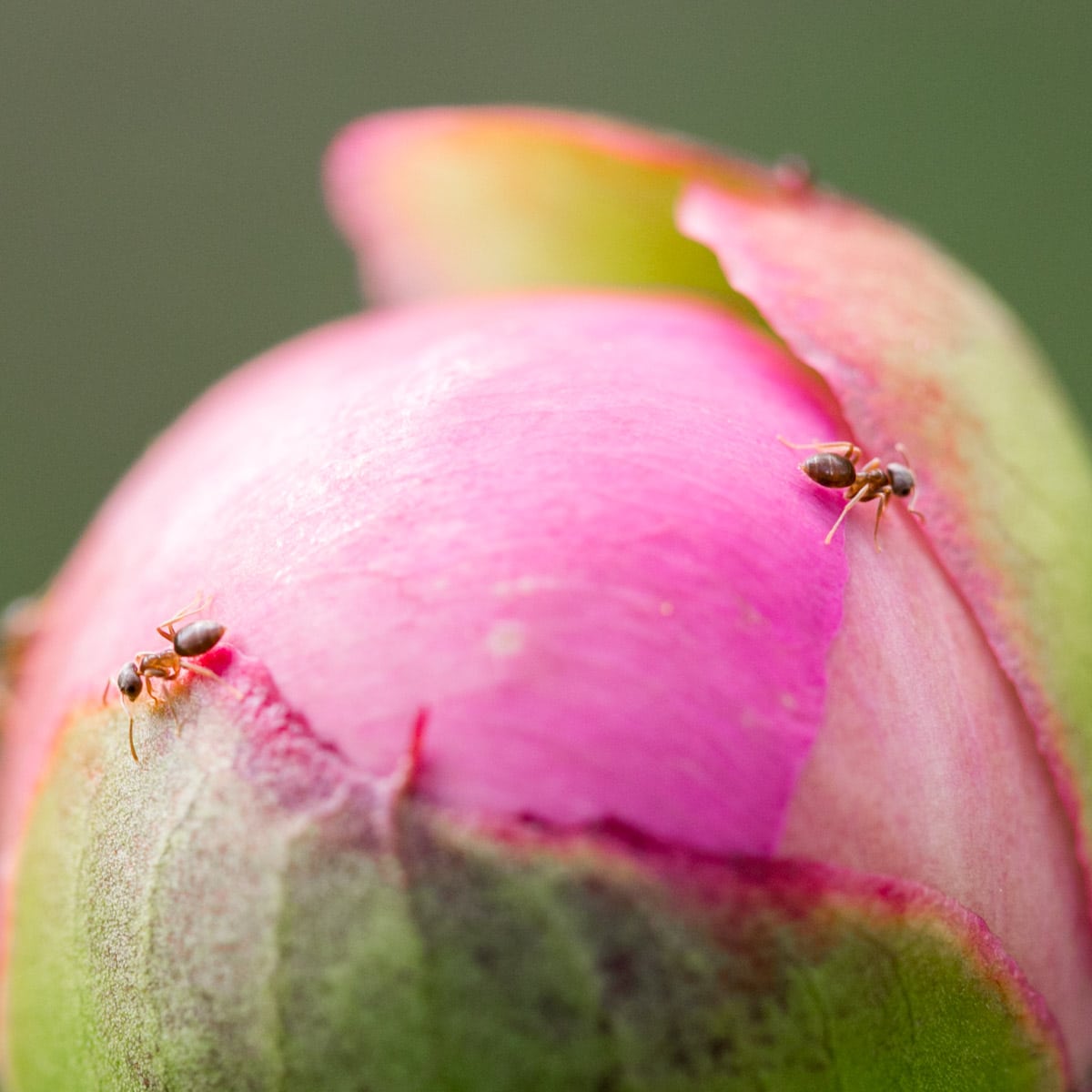How To Grow + Care For Lilac Bushes
Learn all the tips on how to grow and care for lilac bushes here!
Lilac shrubs burst with colorful blooms in mid to early spring, bringing romantic flowers and enticing fragrances to the spring garden.
Famous for their vibrant purple buds and romantic scent, these shrubs are easy to grow!
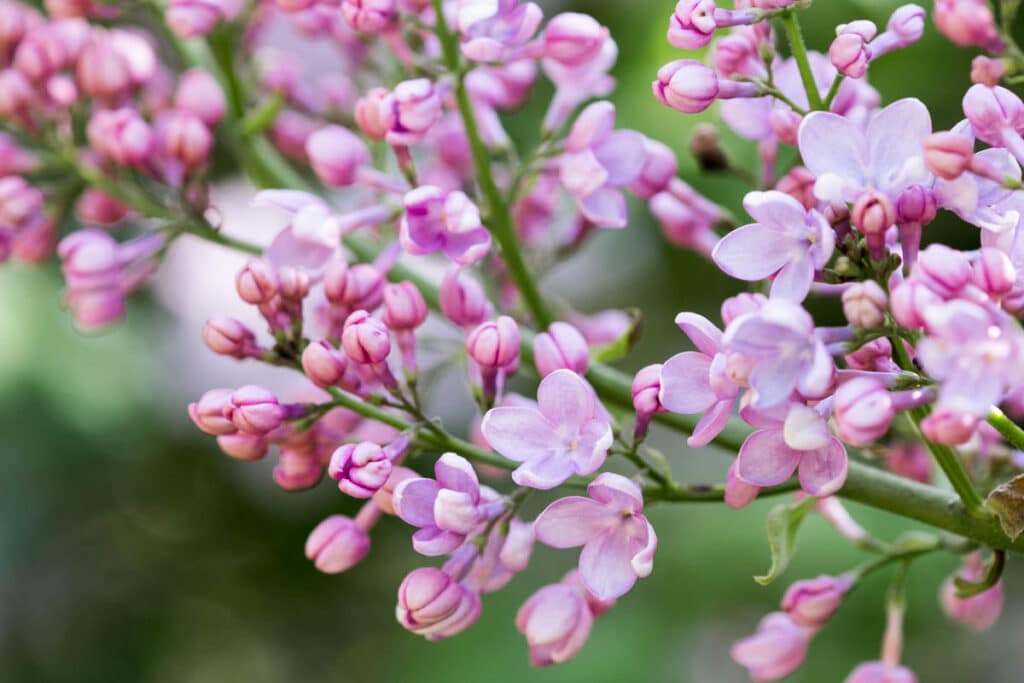
These enchanting spring flowers need ample sunlight, fertile soil with good drainage, and a little pruning.
Get more ideas for spring flowers here!
How To Grow
Lilac plants are easy to grow but have a few basic care requirements. These vibrant bloomers prefer slightly alkaline soil that is well-draining. They also need high-quality soil full of organic matter, especially when they are young!

Lilacs must have 6 to 8 hours of sun to thrive. Young bushes need regular watering, while older, established plants are moderately drought-tolerant.
Lilac flowers bloom on old wood and must be pruned in late spring after the buds have just faded. The best time to plant is in early spring when the ground is workable (and there is no sign of frost.).
Keep reading to learn more about the right soil, sunlight and watering methods for lilac flowers.
About Lilac Bushes
Also known by their Latin name, Syringa vulgaris, lilacs are beautiful perennial flowering shrubs, sometimes considered small trees.
They originate from Eastern Europe on the Balkan peninsula and, in their native habitat, grow on rocky terrain full of sunshine. These enchanting shrubs are reliable, hardy growers who can live for decades.

These colorful flowers are famous for their sweet-smelling blooms and beautiful green foliage. They light up spring with their deep floral aroma and bold hues of purple (and other colors!).
Lilac shrubs were widely cultivated and introduced to the United States in the late 1800’s. Flowers are available in shades of pink, purple, mauve, and white.
The four-petaled, cross-shaped flowers are tubular and attract hummingbirds, bees and butterflies.

The most popular flower color is a bold purple. Individual flowers unfurl along a long pinnacle; the leaves are light green and oval and stay vibrant until late fall to early winter.
These elegant shrubs need cold winters to thrive and grow best in zones 3-9.
Depending on the variety, lilac shrubs can grow quite tall: up to twenty feet and 10 feet wide. (There are dwarf varieties that hang out in the 5 ft tall range).
When in full bloom, lilacs overflow the senses with their elegant beauty and aromatic flowers and make a beautiful addition for a cottage styled flower garden.

Varieties
There are over 25 different varieties and thousands of unique cultivars. Common Lilac, Persian Lilac, and Dwarf Korean lilacs are three common varieties.
Common lilacs (French lilacs) are easy to grow and typically found in areas with moderate temperatures. They feature bold-colored flower blooms in bright purple, pink, white, and even yellow.
Persian lilacs have an elegant arch and feature pale violet flowers with a strong fragrance.
Dwarf lilacs are compact and dense, saving space in the yard but making a significant impact with fragrant blooms and bold flower color. Dwarf Korean lilacs are a popular variety.

The Best Place To Plant Lilacs
Plant these sun loving shrubs in an area with direct sunlight and enough space for good air circulation. Choose a location with good soil drainage and rich, fertile soil.
The first year of growth helps the young plant establish and grow a healthy root zone, so be sure to avoid transplanting and pick a good location with adequate soil drainage, full sun, and humus-rich soil.
Avoid planting these bushes in windy areas – harsh gusts may break the limbs.

When To Plant
The best time of year to plant lilacs is in early spring, before the leaves start to unfurl, or in early fall before the ground freezes.
Do not plant in mid to late summer, as the heat can harm a new, small tree.
How To Plant
Planting a lilac is easy. You will need a shovel and any necessary soil amendments (see soil section). We recommend using bone meal as it nourishes the plant’s roots and is slightly alkaline.
Follow these steps:
- Dig a planting hole large enough for the root ball to sit in, but allows the base plant to be at ground level
- Add a handful of bone meal to the soil and blend well
- Remove the plant from its container and gently break up the roots
- Backfill the hole with soil and compost
- Give the plant a nice long drink of water!
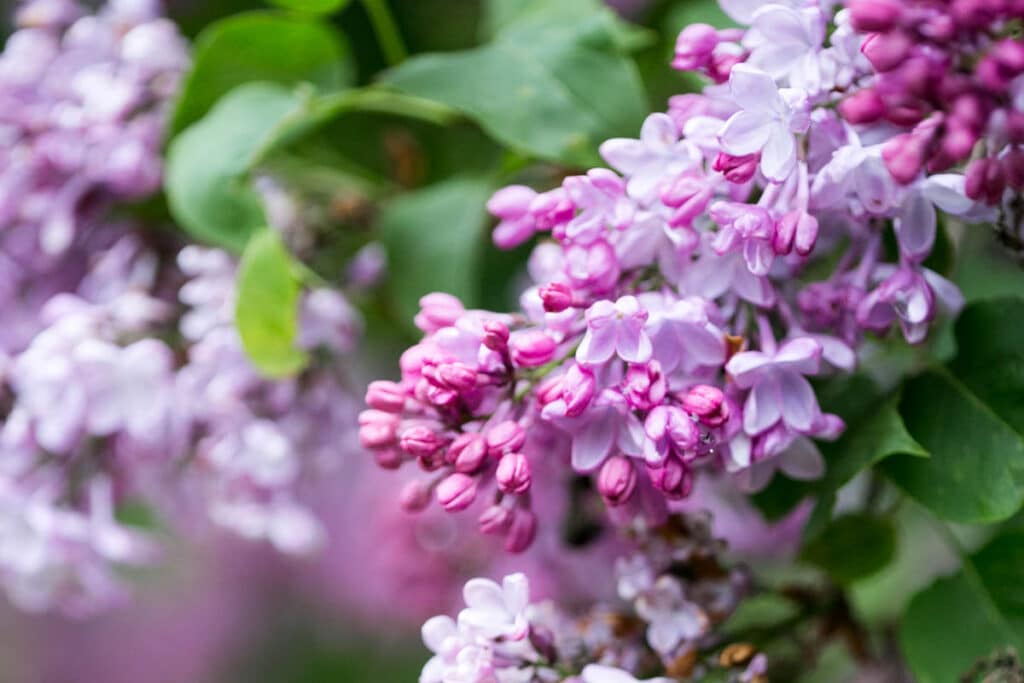
Care Guide
Once planted, you’ll want to give your plant the right sun, soil and water. Here are all the details:
Sunlight
Lilacs thrive in full sun and need 6-8 hours of sunlight.
And while they can tolerate part shade, they will not produce as many blooms without full sun. Late afternoon shade can work for lilacs if they have at least six hours of morning sun.

Soil
These fragrant bloomers need well-drained, fertile soil with a pH of 6.5-7 to thrive. Lilacs do not like their roots being wet and need good soil drainage, along with infrequent watering.
Amend heavy clay soils with organic matter from compost, decaying leaf matter, and rotted farm manure.
According to the Hulda Klager Lilac Society, good soil drainage is essential for lilacs. In heavy clay soil, build a mound out of soil and compost to encourage thorough drainage.
Though lilac roots are not invasive, they have aggressive root growth, and a lilac root can grow very long, with a 10-15 foot root zone.

pH Level
Lilacs are fussy about pH levels. They prefer the soil to be neutral to slightly alkaline, so test your pH before planting. If your soil is too acidic, you can amend it with lime.
If the soil tends to be overly alkaline, you can bring it back into the ideal range by adding aluminum sulfate to the soil.

Water
Established lilacs prefer to have a long drink every few weeks. They cannot stand having wet roots, and over-watering can encourage disease and limit the plants’ blooms.
Water needs can vary:
- Newly planted lilacs: Water young lilacs regularly to establish their roots. Check the soil daily, and give the plant a long drink when the top inch of the earth is dry. (Stick your finger into the soil to the first knuckle to test dryness).
- Mature plants: Established lilacs prefer a long, deep drink every two weeks during hot weather.
- Potted: A potted bush must be watered more frequently than a lilac in the ground. Check the soil moisture in the container regularly, especially during hot weather. When the top few inches of soil are dry, water your plant.

Fertilizer
These shrubs can benefit from a mild, balanced fertilizer in late winter before the growing season begins.
Use a fertilizer with a balanced NPK ratio to support the roots, foliage, and flowers.
Apply the fertilizer around the plant’s drip line – the area where rain drips from the branches to the ground. Avoid using too much fertilizer as it may harm your plant.

Air Circulation
Good air circulation for lilac bushes will help prevent disease and give the plant room to grow.
Space large plants at least 4 feet apart from each other. Ideally, a lilac bush will have a 10×10 square foot radius to grow.
If you have a small space, consider planting dwarf varieties.
Space your shrub with enough room so it is not overgrown by another tree or plant.
Good air circulation will prevent rot, decay, and fungus-like powdery mildew from forming.

When Do Lilac Flowers Bloom?
Lilac flowers bloom in spring to early summer during April, May, and early June.
Bloom time depends on the flower variety and the local growing zone. Seasonal weather conditions will also affect bloom time.
We have had wild spring weather in the Northwest in the last few years. The temperatures have stayed colder longer, and there has not been as much sunlight and warm temperatures, delaying blooms by 2-3 weeks.
Increase the length of your blooming season by planting a variety of lilacs that bloom at different times.
How Long Do Lilac Blooms Last?
The fragrant flowers of lilacs typically last about two weeks, depending on the variety of Lilac and the weather conditions.
Rain can affect how long the flowers last. The best way to ensure a long blooming season is to plant different varieties of lilac trees that bloom at various times throughout the season.
Where To Buy
Lilacs can be purchased at a local nursery or garden center. You can also find them at specialized lilac gardens and growers like the Hulda Klager Lilac Gardens.
Should Lilacs Be Deadheaded?
Deadheading flowers is optional and the plant will not produce additional flowers if you remove spent blooms. (Unfortunately!).
However, removing spent blooms allows the plant to put its remaining energy into creating flower buds for the next season.
So, while deadheading will not increase the amount of blooms produced, it will direct the plant’s resources to creating more beautiful flowers for the following year.

To deadhead, simply wait until the flowers are done blooming then snip the spent blooms off.
Remember that new lilac flowers grow on old wood. So use care when pruning to avoid cutting off the new growth!
How + When To Prune
Annual pruning can prevent lilacs from becoming unruly and growing out of control. The flowers bloom on old wood, however, so pruning needs to be done right after the plant blooms.
The ideal time to prune lilacs is immediately after the bush has bloomed in the spring.
Prune any diseased or unproductive limbs and dead wood, and remove the oldest branches that are not producing any flowers. This article shows how to prune bushes at all stages of their growth.
Fungal Disease, Insects + Pests
Bacterial blight is a disease that affects the leaves of the plant. Leaves will begin to show dark colors and water-soaked spots that eventually morph together and kill the leaf.
Remove the affected leaves and burn them at the first sign of bacterial blight. A copper-based fungicide during early spring can also be effective. Learn more about lilacs and bacterial blight here.

Powdery mildew can also be a problem for lilac bushes. The leaves may become covered with tiny microscopic fungi that appear white. While powder mildew typically occurs at the end of the season and does not harm the plant, it can be unsightly.
To combat powdery mildew give your shrub excellent growing conditions with plenty of air circulation and water at the base of the plant.
Get more beginner flower gardening tips here!

FAQ’S
The best spot to plant a lilac bush is in a full-sun location with good soil drainage and out of the wind. Give your plant plenty of space to promote good air circulation.
Yes, lilacs are easy and fun to grow! Young plants need a little attention, but they will become independent and fuss-free as they grow larger.
It takes 3-5 years before most varieties start producing blooms.
Final Thoughts
Full of charm and blushing with pink, purple and white flowers, lilacs are a classic shrub that should be featured in every garden.
Ihope you enjoyed this article on how to grow these lovely cottage flowers, and I’d love to hear fro you. Please let me know all about your Lilac growing adventures in the comments!

